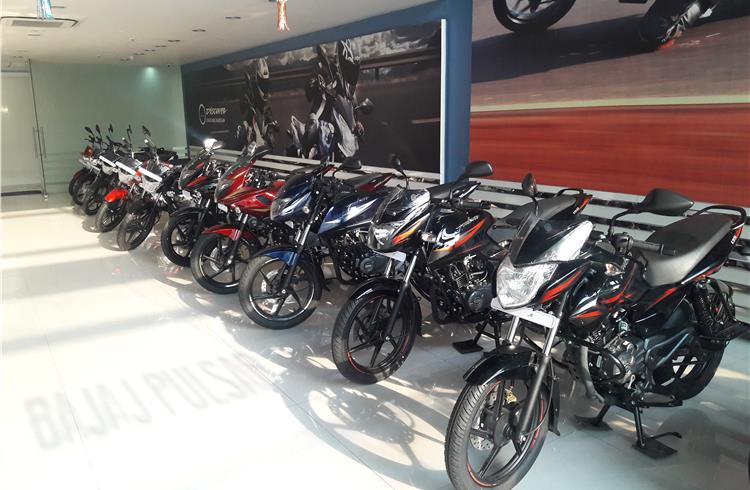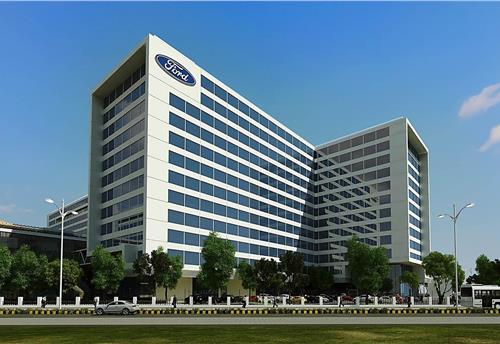Bajaj Auto looks to revive export sales in FY2018
India’s largest exporter of motorcycles and three-wheelers aims to ride out its export woes by shifting focus onto new markets and reducing its dependence on Nigeria.
Pune-based Bajaj Auto Ltd (BAL), India’s fourth-largest two-wheeler company and the largest exporter of motorcycles and three-wheelers, hopes to revive growth in its export business in FY2017-18.
The company witnessed a year-on-year decline of 16.50 percent and 31.70 percent in its motorcycle and three-wheeler export volumes respectively in FY2016-17. Its motorcycle export volumes stood at 12,18,541 units in FY2017 as against 14,59,295 units in FY2016, down 16.50 percent YoY.Three-wheeler export numbers totalled 191,236 units in FY2017 as against 280,000 units in FY2016, down 31.70 percent. The impact of declining export volumes, along with a similar performance in the domestic market, is clearly visible in the latest financial results filed by the company.
In FY2017, Bajaj Auto recorded total revenues of Rs 24,310 crore as against Rs 24,957 crore in the previous fiscal. The de-growth of 2.59 percent YoY is attributed to the decline in overall sales volumes. In FY2017, the company sold 3,665,950 units (comprising domestic and export sales of bikes, quadricycles and three-wheelers), down 5.84 percent YoY (FY2016: 3,893,581 units).
Profit before tax for FY2017 stood at Rs 5,336 crore as against Rs 5,547 crore in FY2016. The company has reported profit after tax (PAT) of Rs 3,828 crore, down by 2.60 percent YoY. The company had reported profit after tax of Rs 3,930 crore for FY2016.
Latest April-May 2017 export numbers for the company reveal that the company’s strategy is working – 252,594 units despatched for year-on-year growth of 15.35 percent.
STILL THE INDUSTRY’S EBIDTA LEADER
Although the company continues to operate at industry-leading operating EBIDTA (Earnings Before Interest, Taxes, Depreciation and Amortisation) margins of 21.7 percent reported for FY2017, it is down by 0.5 percentage points when compared to the previous fiscal. Bajaj Auto’s operating EBIDTA margin in FY2016 was 22.2 percent.
Market analysts attribute weaker margins to sharp decline in sales (specifically exports), commodity pressures and absorption of costs related to transition of vehicles from BS III to BS IV emission norms – a one-time expense.
“International business was affected due to external factors like economic and political uncertainties, sharp devaluation of currencies and scarcity of US$ in some of the key importing countries,” quoted an official release from the company.

Exports of the premium Dominar 400 have begun.
CAUTIOUSLY OPTIMISTIC ABOUT EXPORTS
Giving his outlook on exports business in FY2018, Kevin D’Souza, president, finance, Bajaj Auto said: “We are cautiously optimistic on the exports front for FY2017-18 as the uncertainties in the global markets continue to exist. We are expecting the month of May 2017 to be reasonable. This year we are not factoring too much growth from Nigeria. Instead, we are seeing traction coming from Latin America and our neighbouring countries including Bangladesh and Nepal.”
Nigeria historically has been one of the key export markets for Bajaj Auto. The company’s monthly shipments to this market averaged more than 20,000 units and had hit a peak of over 40,000 units in the past.
According to an industry analyst, who prefers to remain anonymous, “The company is reducing its dependency on the Nigerian market, which is replaced with increased focus on Egypt, Bangladesh, LATAM, Nepal and others. Bajaj Auto says that KTM is performing well in Indonesia, which is understood to be typically a difficult market to penetrate. They have also started exporting the Dominar 400 with monthly volumes in the range of 2,000 to 3,000 units. The management expects that all these steps put together will help the company recover its export volumes in FY2018.”
In line with its capex investments in the previous financial years, for FY2018 too, the company has earmarked Rs 200 crore for its capital expenditure.
According to Kevin D’Souza, the motorcycle mix in the domestic market continues to be under pressure. He, however, is optimistic about the growth of KTM models and the Bajaj V series.
“I will be happy to see Bajaj V series, both V12 and V15 put together, sell in the range of 35,000-40,000 units per month. Also, KTM should fetch sales in the region of 45,000-50,000 units in FY2018,” the top company official said.
According to industry sales data from SIAM, Bajaj Auto has sold close to 35,000 KTM motorcycles in the domestic market in FY2017. The average monthly sales of the Bajaj V series, on the other hand, stood at close to 19,500 units.

Bajaj expects the KTM series to grow by at least 29 percent in FY2018, thanks to the surging demand for the KTM 250 Duke model.
PULSAR AND AVENGER REMAIN STRONG SELLERS
An official communication from Bajaj Auto claims that its market share in the domestic motorcycle segment stood at 18 percent in FY2017. Among the top performing motorcycle brands were the Pulsar and Avenger, which together sold more than 786,000 units, thereby marking a growth of roughly three percent YoY.
The mass commuters – Platina and Bajaj CT100 – raked in combined sales of over 836,000 units in the last fiscal. The company document claims that Bajaj Auto commands a market share of nearly 32 percent in the entry level motorcycle segment.
The V15 model, along with its newly launched sibling V12, recorded combined sales of more than 234,000 units for the last fiscal thereby becoming a solid contributor to company’s overall annual motorcycle sales.
On the premium motorcycle front, Bajaj Auto sold more than 9,300 units of its 375cc Dominar 400 and KTM garnered sales of close to 35,000 units, which marked a growth of 15 percent YoY in FY2017.
In motorcycle exports, the company claims that it has gained market share in 16 out of 18 key markets that together contribute to be around 85 percent of its total two-wheeler export business.
“Bajaj Auto continues to be India’s No. 1 exporter of motorcycles and three-wheelers, having exported 1.2 million motorcycles and 191,000 three-wheelers,” quotes the company release.
RECORD-SETTING YEAR FOR KTM
Bajaj Auto's Austrian partner KTM AG, in which Bajaj has a stake of about 48 percent, has reported record sales in CY2016. KTM registered total sales of 203,423 motorcycles, up by 11 percent YoY. The turnover and PAT grew by 12 percent YoY (at 1.14 billion euro) and 13 percent YoY (at 72.1 million euro) respectively. Proportionate profit after tax (PAT) of 34.6 million euro or Rs 255 crore has been accounted in the consolidated results of Bajaj Auto.
On the commercial vehicle front, Bajaj Auto has reported an improvement in its market share, which now stands at 49.5 percent for FY2017.
The company, which has cash reserves of Rs 12,368 crore as on March 31, 2017 as against Rs 9,086 crore a year before, is well placed to capitalise on new growth opportunities.
Also read : KTM strengthens ASEAN game-plan with new Philippines plant
RELATED ARTICLES
Uniproducts India targets 15% growth till FY2027, eyes new EV OEMs for NVH parts
The Noida-headquartered company, which is a leading manufacturer of roof liners, floor carpets, sound insulation materia...
Ford to build more EV software capability at Chennai tech hub
Ford Business Solutions India, which currently employs 12,000 personnel set to add 3,000 more; Ford, which is known to b...
ASK Automotive to set up JV with Aisin to sell aftermarket parts for cars
Ask Automotive will have 51% of the equity of the joint venture to be set up with Aisin Asia (Thailand) Company and Aisi...





 20 Jun 2017
20 Jun 2017
 11349 Views
11349 Views





 Autocar Pro News Desk
Autocar Pro News Desk




